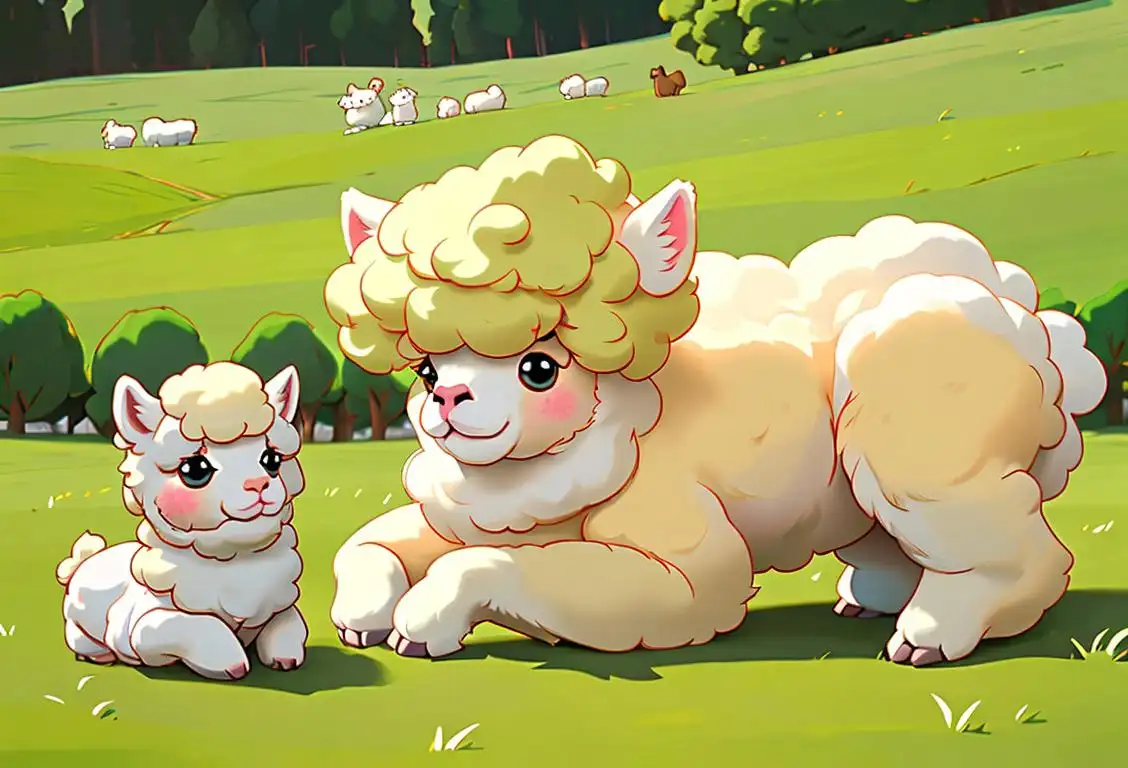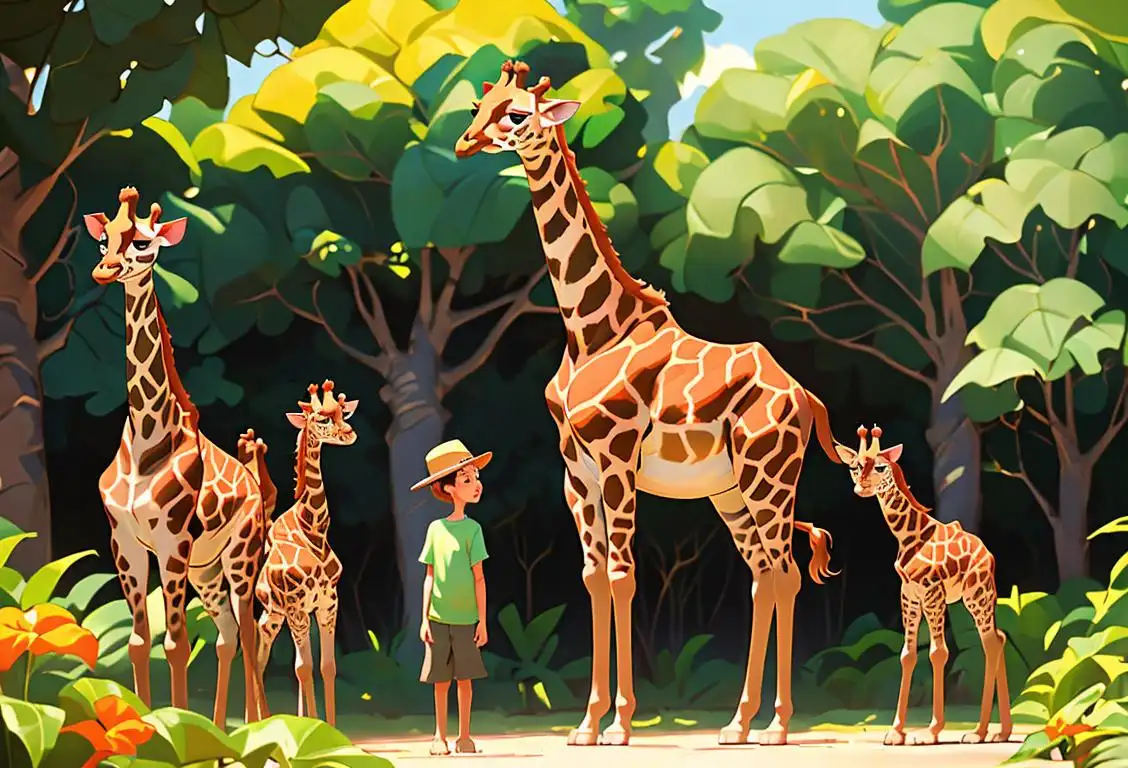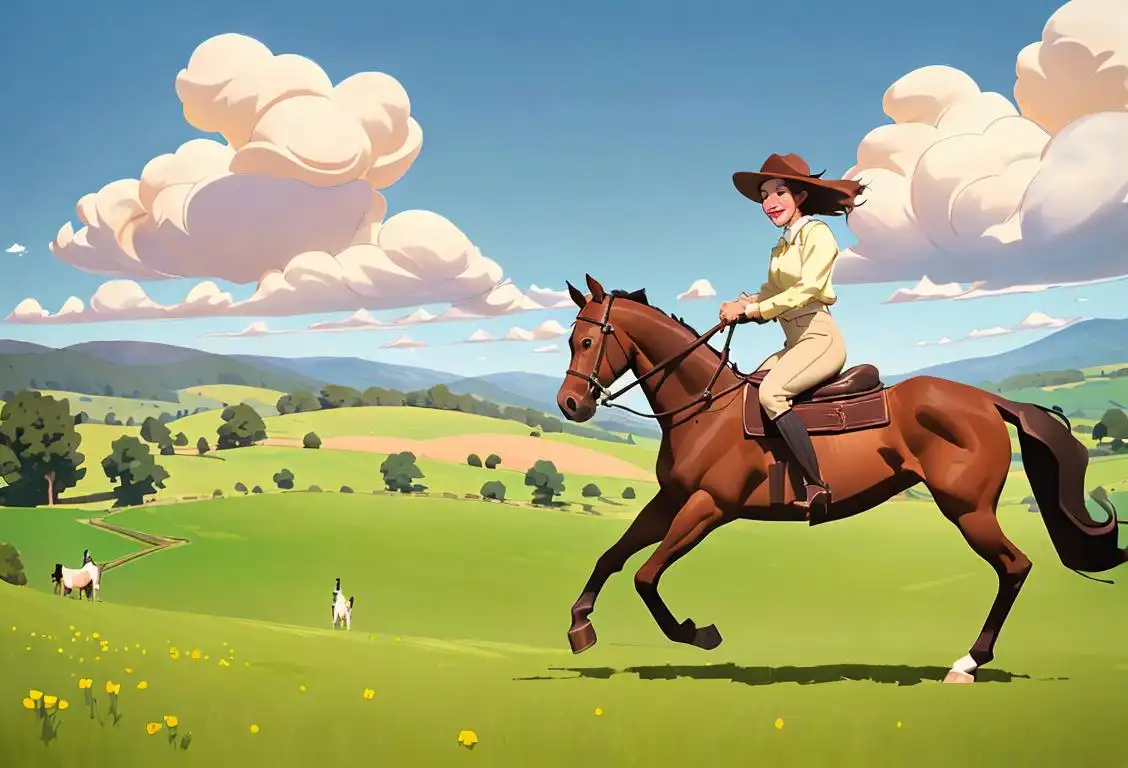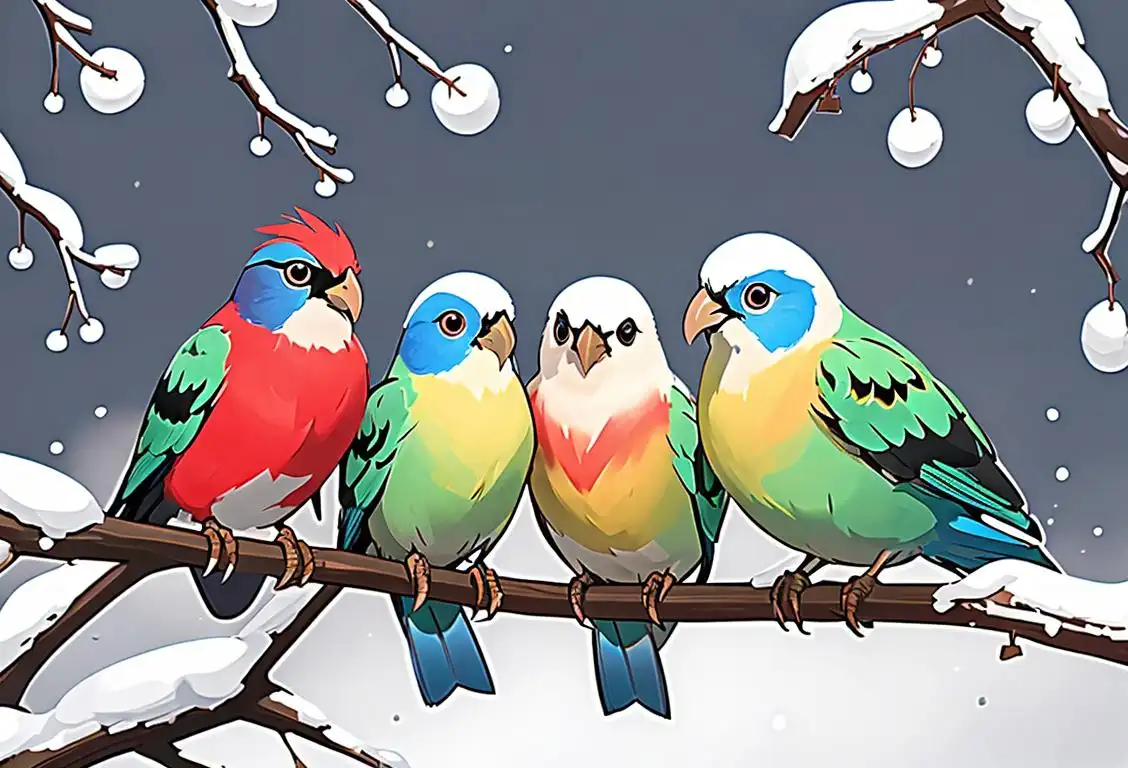National Alpaca Farm Day

Welcome to the wonderful world of National Alpaca Farm Day! Prepare to embark on an adventure filled with fluffy fleece, adorable camelids, and maybe even a few alpaca puns. It's time to celebrate these majestic creatures and the farms that care for them.
When is Alpaca Farm Day?
It's national alpaca farm day on the 5th January.
The Origins of National Alpaca Farm Day
Did you know that National Alpaca Farm Day was created to raise awareness about alpacas and promote the alpaca farming industry? It first trotted onto the scene (pun intended) on an iconic day in alpaca history: January 5, 2017. Since then, alpaca enthusiasts around the world have been gathering on this day to learn, appreciate, and get up close and personal with these furry friends.
The Internet Buzz
With 66 mentions online, National Alpaca Farm Day has certainly created a woolly buzz. Social media feeds were filled with heartwarming photos of alpacas wearing colorful accessories, participating in photo shoots, and even giving the occasional smooch. It's safe to say that the internet went a little alpaca-crazy on this day, and who can blame them?
Fun with Alpacas
Now, let's dive into some fun alpaca facts to impress your friends and family with:
- Alpacas are part of the camelid family, which also includes llamas and camels. But let's be honest, alpacas are easily the cutest of the bunch.
- Alpacas communicate through a range of sounds, including humming, whistling, and even a super adorable gentle clucking noise. It's like having a farmyard concert right in your backyard!
- Alpacas have been domesticated for over 6,000 years and were highly valued by the ancient Inca civilization in Peru. They were often considered a symbol of wealth and prestige.
- These fluffy creatures come in 16 officially recognized colors, including white, fawn, brown, and black. Who says you can't have a rainbow of alpacas?
Get Involved!
If you're feeling the alpaca love and want to celebrate National Alpaca Farm Day, there are plenty of ways to get involved. Visit a local alpaca farm near you (don't forget to ask permission first!) and learn about alpaca husbandry, their fiber, and maybe even meet a few alpacas in person. Can't find an alpaca farm nearby? No worries! You can still join the celebration by sharing alpaca memes, wearing alpaca-themed clothing, or even knitting yourself a cozy alpaca-themed scarf.
History behind the term 'Alpaca Farm'
1450 AD
Incan domestication of alpacas
In the year 1450 AD, the Inca civilization in South America began domesticating alpacas. Alpacas were highly valued for their luxurious fleece, which was used to create exceptionally soft and warm textiles. The Inca people recognized the value of these animals and established farms specifically dedicated to breeding and rearing alpacas.
1843
The First Alpacas Arrive
In 1843, the first alpacas were imported to Europe from Peru. These majestic animals were initially brought to England and then spread to other parts of the continent. They quickly captured the attention and fascination of people with their thick and luxurious fleece, graceful appearance, and gentle nature.
1808
The Discovery
In the year 1808, the term 'alpaca farm' was born when a Spanish explorer, Antonio de Ulloa, first encountered the enigmatic animals while exploring the Andes Mountains in Peru. Ulloa was captivated by the soft, luxurious fleece of alpacas and immediately recognized its immense value. He brought back samples of alpaca wool to Spain, sparking interest among European textile enthusiasts.
1800
Domestication of alpacas
In the early 1800s, indigenous communities in the Andean region of South America began domesticating alpacas for their wool. Alpacas were highly valued for their soft and luxurious fleece, which could be spun into yarn and used to create warm and durable fabrics. This marked the beginning of alpaca farming as we know it today.
1840
Introduction of alpacas to Europe
In 1840, alpacas made their way to Europe when a small number of these charming creatures were imported into England. They quickly became popular among the aristocracy for their unique appearance and the quality of their fiber. This introduction sparked interest in alpacas outside of their native land and laid the foundation for the establishment of alpaca farms in Europe.
1836
Expansion to the United States
The term 'alpaca farm' gained prominence in 1836 with the establishment of the first alpaca farm in the United States. Samuel W. Johnson, an American merchant, imported a small herd of alpacas from Peru and created the Johnson Farm in Massachusetts. This marked the beginning of alpaca farming in America, and the term 'alpaca farm' became synonymous with the practice of raising alpacas for their prized fleece.
1858
Establishment of Alpaca Farms
By 1858, alpacas had become increasingly popular in Europe. People recognized the potential of these animals for their luxurious fiber, and this led to the establishment of alpaca farms. These specialized farms began breeding and raising alpacas to cater to the growing demand for their exquisite fleece. The farms provided a controlled environment where alpacas could thrive and ensure a steady supply of their prized wool.
1800s
Exploration of alpacas by Europeans
During the 1800s, European explorers and traders journeyed to South America and encountered alpacas for the first time. They were fascinated by the unique characteristics of these animals, such as their incredibly soft fleece and their adaptability to high altitudes. The Europeans recognized the commercial potential of alpacas and began establishing alpaca farms in their home countries.
1860
Alpacas in the United States
Around 1860, alpacas arrived in the United States as part of the zoological collection given to President James Buchanan. Later, in the 1880s, wealthy Americans began importing alpacas for their private collections and as part of the efforts to establish a viable American alpaca industry. The first alpaca farms were set up, primarily in the western states, and marked the beginning of alpaca farming in the USA.
1980s
Rise in Alpaca Farming in the United States
Alpaca farming saw a surge in popularity in the United States during the 1980s. To satisfy the increasing demand for alpaca fiber, many farms dedicated to raising and breeding alpacas emerged across the country. This period marked a significant milestone in the spread of alpaca farming, as it became a viable industry in the U.S., offering unique opportunities for farmers and entrepreneurs alike.
1856
The Gold Rush Effect
During the California Gold Rush in 1856, the term 'alpaca farm' experienced a surge in popularity as gold prospectors turned to alpaca farming as a more sustainable and profitable alternative. Alpaca fleece became a valuable commodity, providing a stable source of income for many settlers who sought fortune in gold but found it in the soft fibers of alpacas instead.
1980
Resurgence of alpaca farming
In 1980, a resurgence of interest in alpacas occurred in countries like the United States and Australia. This renewed fascination was largely driven by the growing demand for natural and sustainable products. Alpaca farms once again became popular, not only for their fleece but also as tourist attractions. Visitors could learn about the different breeds, observe the shearing process, and purchase alpaca products.
2000s
Alpaca Farms as Tourist Attractions
In the 2000s, alpaca farms started to gain recognition as tourist destinations. Visitors were drawn to these farms to experience firsthand the beauty and charm of alpacas. They could learn about the care and handling of alpacas, observe their gentle behavior, and sometimes even participate in activities like feeding and petting these adorable creatures. Alpaca farms became educational and recreational havens, where people could connect with these fascinating animals.
20th Century
Alpaca farming expansion
Throughout the 20th century, alpaca farming expanded globally. South American countries, including Peru and Bolivia, continued to lead in alpaca production, while countries like Australia, New Zealand, and the United Kingdom also started their own alpaca farms. The demand for alpaca fiber increased steadily as people recognized its qualities: lightweight, hypoallergenic, and water-resistant. Alpaca farms became not only sources of high-quality fibers but also fascinating destinations for tourists and enthusiasts.
Present
Alpaca farming as a thriving industry
Today, alpaca farming has become a thriving industry worldwide. Alpaca fleece is highly sought after for its quality and versatility, used in the production of clothing, blankets, and other textiles. Alpacas are also bred for their meat and are valued for their gentle nature and low impact on the environment. Many alpaca farms offer agritourism experiences, allowing people to interact with these adorable animals and learn more about their role in sustainable agriculture.
1901
The Rise of Alpaca Fashion
In the early 20th century, the term 'alpaca farm' witnessed a shift in perception as alpaca wool became a fashion staple. The natural qualities of alpaca fiber, including its warmth, softness, and hypoallergenic properties, made it highly desirable among designers and consumers alike. Alpaca farms flourished across the world, supplying the fashion industry with luxurious and sustainable materials.
Present Day
Diverse Alpaca Farms Worldwide
Today, alpaca farms can be found in various parts of the world, from South America to Europe, North America, Asia, and beyond. They continue to play a crucial role in the production of alpaca fiber, contributing to the fashion industry and providing sustainable and eco-friendly alternatives to synthetic materials. Alpaca farms also serve as guardians of alpaca breed preservation and cultural heritage, ensuring these captivating animals thrive for generations to come.
Modern Era
Alpaca Farms Today
In the modern era, the term 'alpaca farm' encompasses a global community of dedicated breeders and enthusiasts. Alpaca farming has expanded beyond its traditional borders, with farms now found in numerous countries. The demand for alpaca fleece and products continues to grow, driven by eco-conscious consumers who appreciate the natural, renewable, and biodegradable aspects of alpaca fiber. Today, alpaca farms serve as both guardians of ancient traditions and innovators in sustainable fashion.
Present
The rise of alpaca farm tourism
In the present day, alpaca farms have gained popularity as tourist attractions. Many alpaca farms offer visitors the opportunity to interact with these gentle creatures, learn about their care, and even participate in activities like feeding and shearing. This unique combination of agritourism and animal experiences has made alpaca farms sought-after destinations for both locals and international travelers.
Did you know?
Did you know that alpacas communicate through a range of sounds, including humming, whistling, and even a super adorable gentle clucking noise?Tagged
awareness fun animalsFirst identified
26th September 2015Most mentioned on
5th January 2017Total mentions
66Other days
Giraffe Day
Badger Day
Horse Day
Pupper Day
Bat Appreciation Day
Turtle Day
Bird Day
Penguin Day
Squirrel Appreciation Day
Red Panda Day









